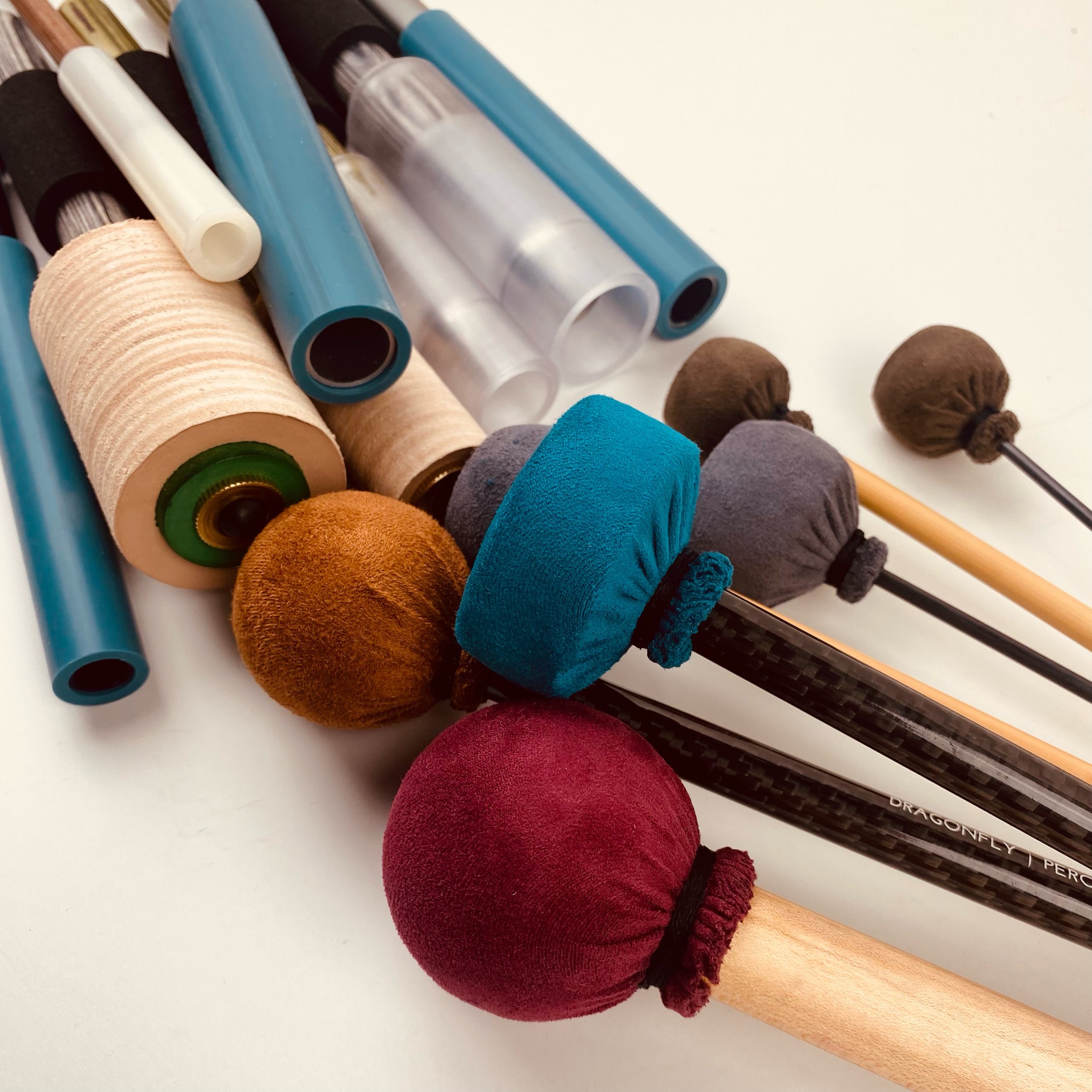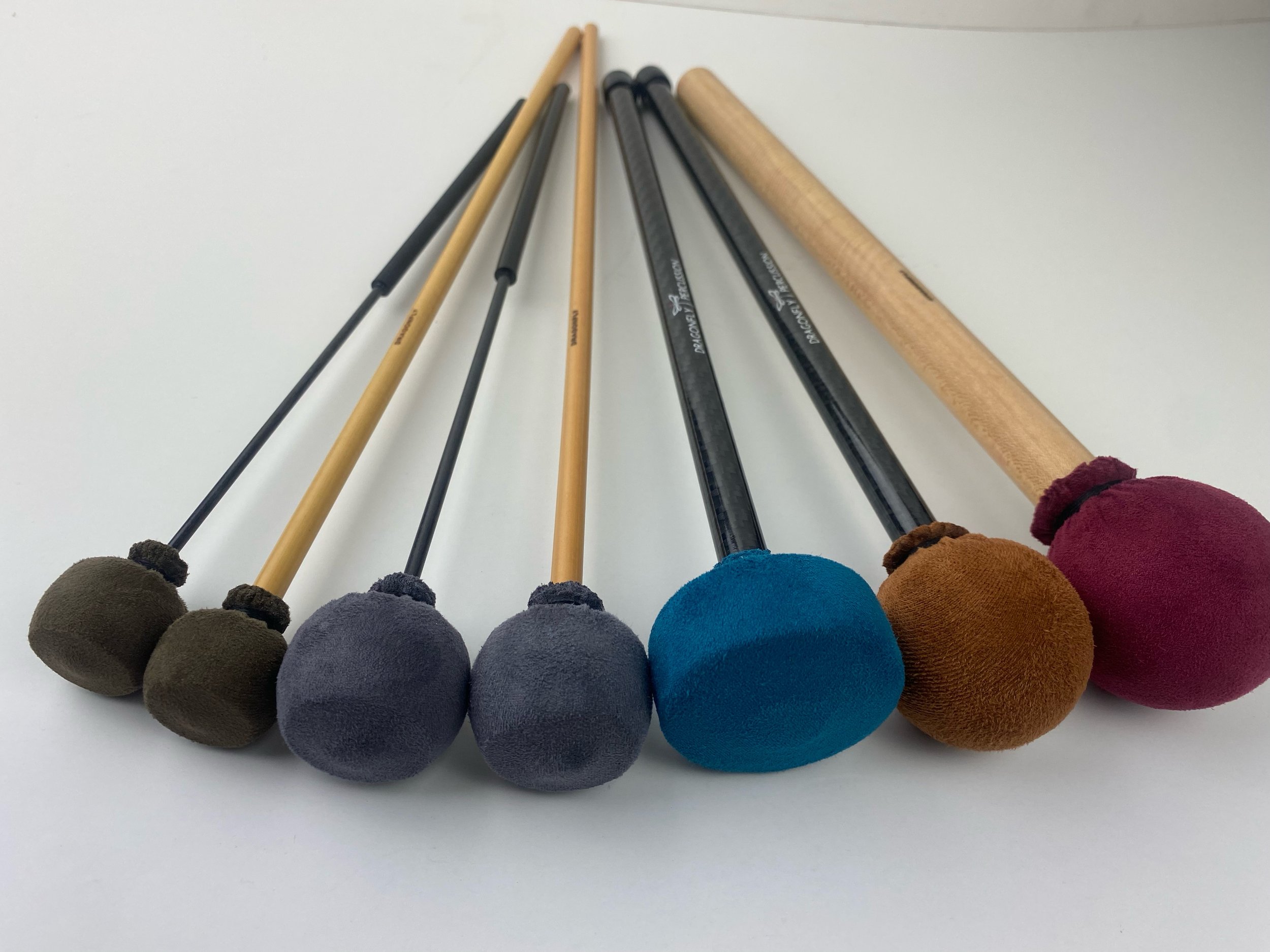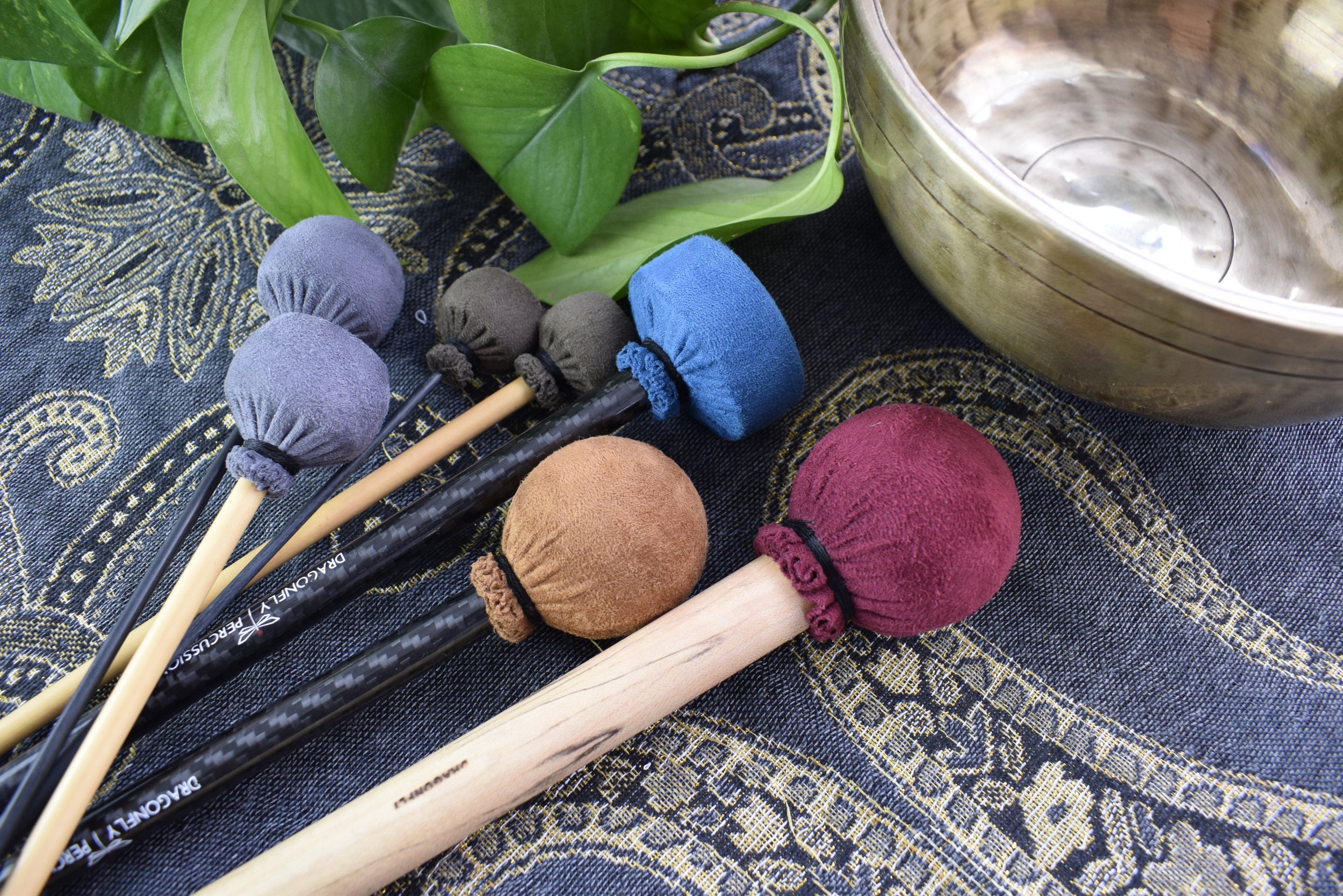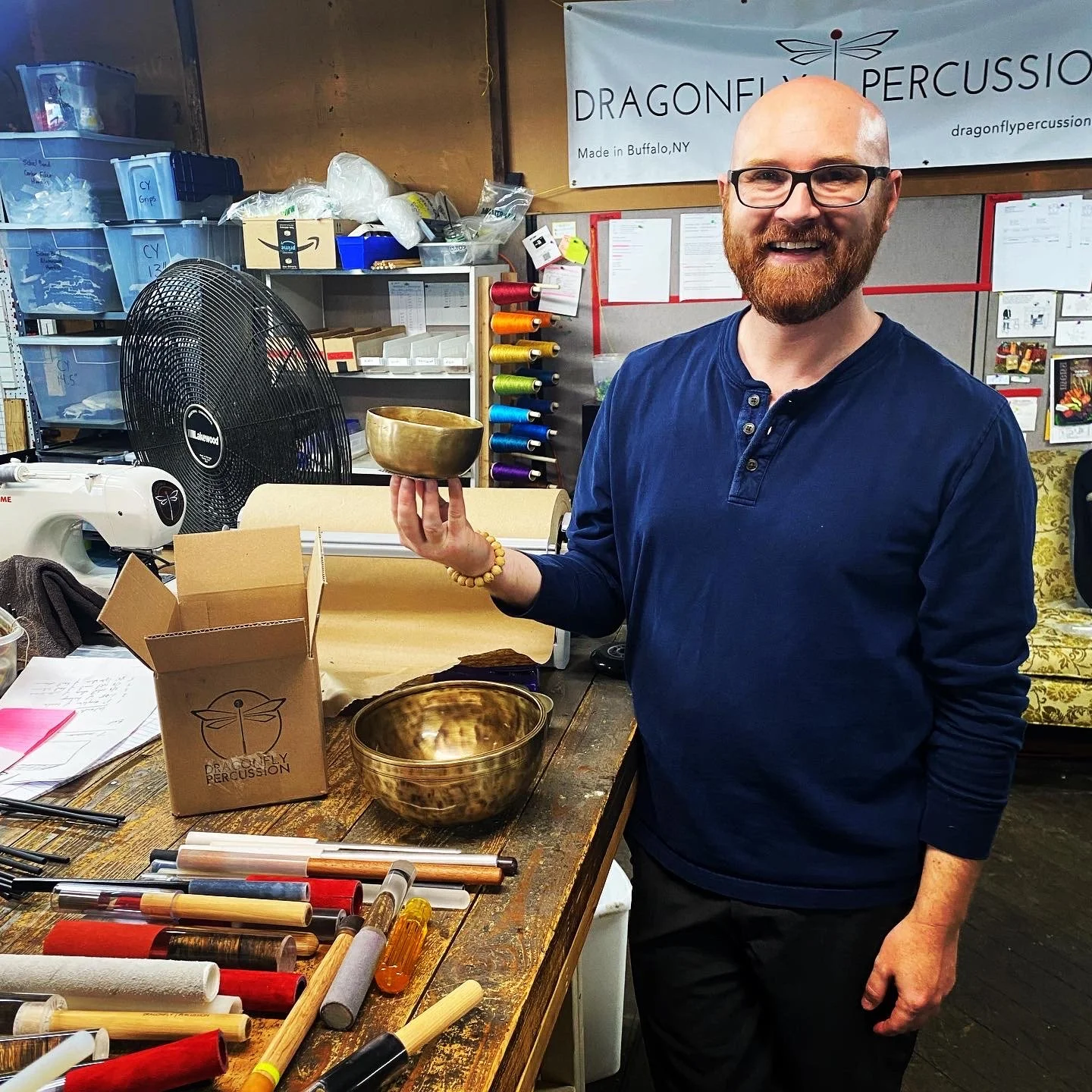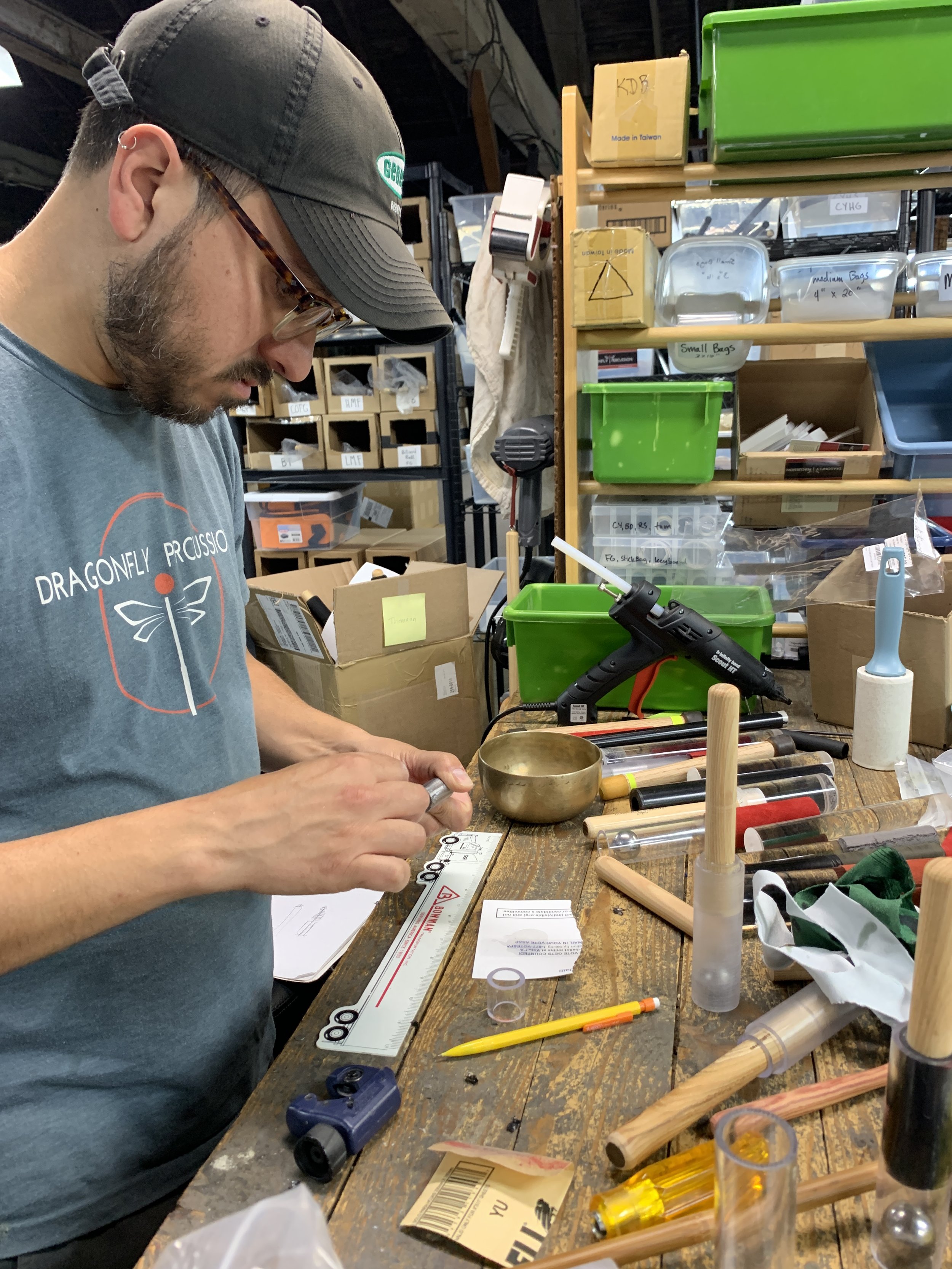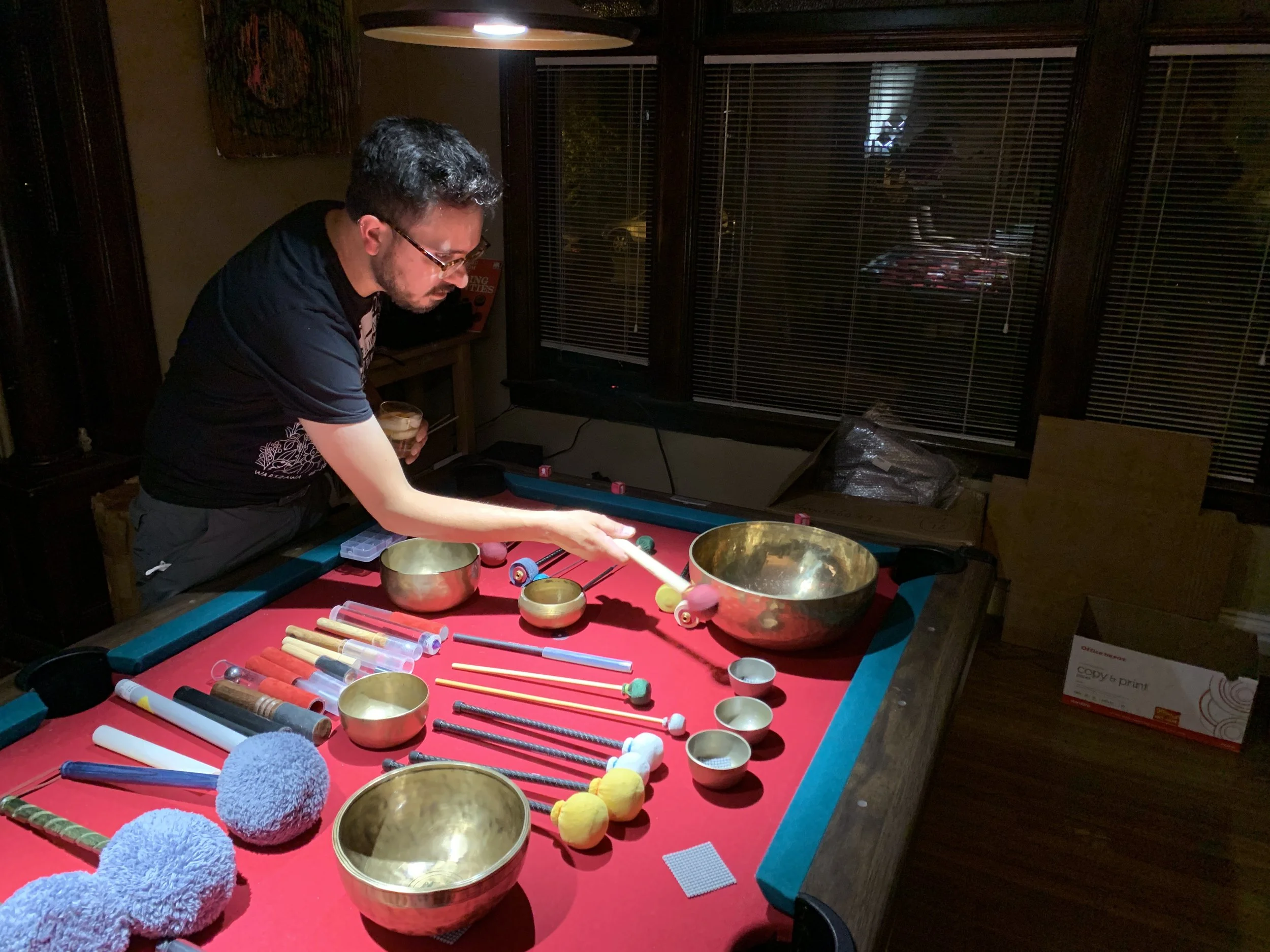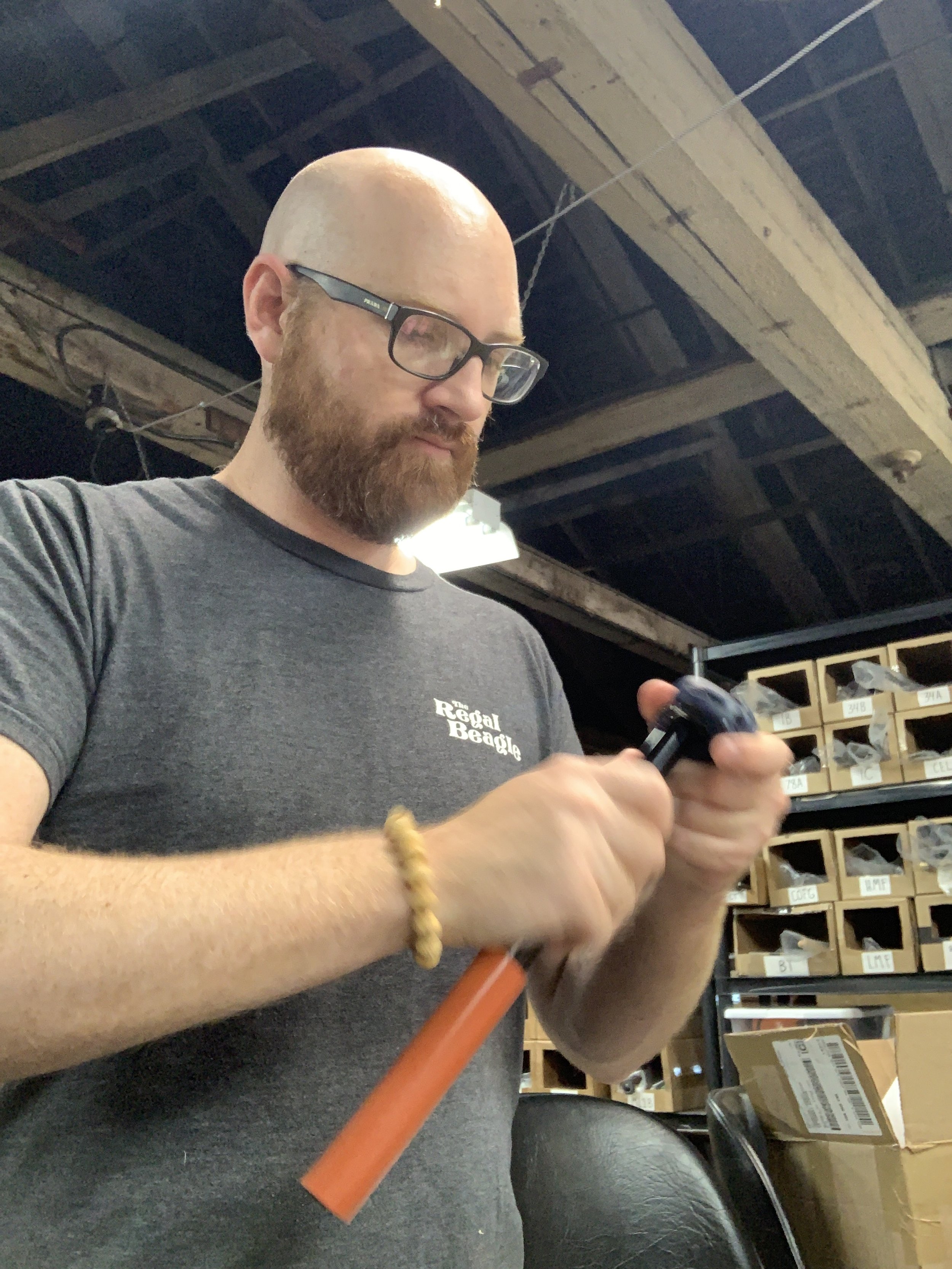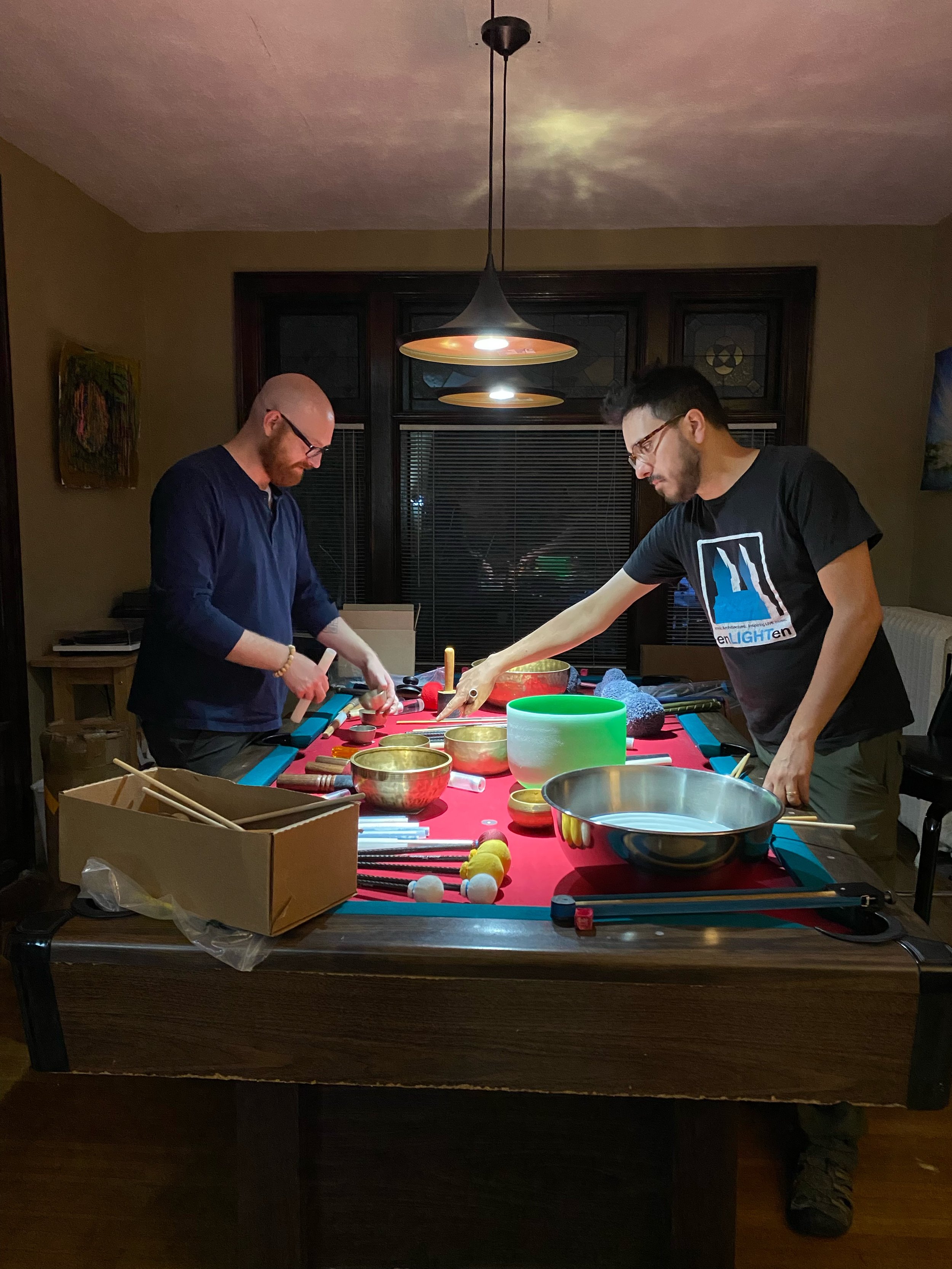Benjamin Irons Signature
Singing Bowl Mallets
by Dragonfly Percussion
INTRODUCING the Benjamin Irons Signature line of singing bowl mallets!
Singing bowls have captured attention since their creation yet many players have never experienced the full voice of their instruments due to the limitations of traditional mallets. Our mallets still offer the classic, lush tones you associate with your singing bowl, only cleaner. But that’s just the beginning. Your instruments have more complex frequencies than you realize. Every singing bowl has a range of frequencies, from low to high. The mallets you use determine which frequencies you end up hearing.
No matter what size singing bowls you prefer, we have a mallet to bring its best voice to the stage. We created inviters with rich, deep sounds as well as clear, front-forward tones. Our wands are easier to play, more comfortable in the hand, and you’re likely to hear a wider range from your bowl than you have ever experienced before.
We strenuously tested each prototype design for material, weight, length, balance, aesthetic, and of course, SOUND. Early prototypes were sent out to sound healers and therapists, yogis, professional percussionists, retailers, plus teachers and students of the sound healing arts for their feedback. We’re grateful to these incredible individuals for their glowing reviews. Check out what they had to say below, and be sure to watch our product videos to hear what you’ve been missing.
Useful Terminology
Before you start perusing, here are some industry terms that may be helpful:
Inviter - sometimes called “beaters” or “strikers.” We don’t like to hit/beat/strike our instruments, so instead we gently “invite” sound through single invitations or strokes on the singing bowl. “Inviting” creates a bell-like tone with a clear start to the sound.
Wand - rubbing mallets, which are used to create a sustained sound through friction along the rim of singing bowls.
Tranquility Singing Bowl - the smallest class of singing bowl, made from cast or hand-hammered metal and range from 3” to 5” in diameter. Tranquility bowls produce a high-pitched, clear, bright, and soothing tone.
Cup Singing Bowl - the medium-sized class of metal singing bowls, ranging from 4” to 7” in diameter. Cup bowls tend to be in the 4th and 5th octave range of sound (above “Middle C” on a piano).
Jambati Singing Bowl - the largest class of metal singing bowls, ranging from 7” to 14” in diamter (or more!). Jambati bowls tend to be in the 2nd and 3rd octave range of sound (below “Middle C” on a piano).
Bowls on Parade
Frequently Asked Questions
Click here to scroll to the FAQ at the bottom of the page.
My Mallet Recommendations for Metal Singing Bowls
Tranquility bowls (2”-5” in diameter): Tranquility inviter (on either rattan or fiberglass); Micro Wand for singing
Cup bowls (4”-7” in diameter): Cup bowl inviter (on rattan or fiberglass); Small leather wand and small polycarbonate wand for singing
Jambati bowls (7”-14” in diameter): General Inviter, Articulate Inviter, Large Bowl Inviter; Large Leather Wand and Large Polycarbonate Wand for singing
“Temple Bell” sound: Articulate inviter or Tranquility inviter (on rattan)
“Body” bowls (10”-14” in diameter): large leather wand for deep, rumble-y rubbing
Wands
Crystal Singing Bowl Wands
Silicone Wands
Silicone Wands
The lightweight aluminum design prevents fatigue in longer sessions while expressing a full, beautiful tone, free of the white noise “hiss” typical of suede-style PVC wands. The hollow shaft keeps the overall weight light and your bowls safe during play.
The small wand is great for smaller diameter bowls. The medium is the go-to in my arsenal. And the large is a fantastic for crystal bowls with a diameter over 14-inches. Each wand comes with three adjustable rubber ring sliders to customize the wand to your feel, balance, and grip. Best with frosted crystal bowls.
Comparison: stock suede wand and Dragonfly’s Silicone wand.
Metal Singing Bowl Wands
Micro Wand
Sing your smallest singing bowl! Designed for small diameter tranquility and metal singing bowls. This is my go-to wand for singing small metal bowls. The micro-wand brings a bright, clear tone on bowls that most sound healers would deem “unsingable.”
Bonus: the micro wand also works on traditional metal bells and tingsha too!
Micro Wand sound sample.
Leather Wands
Small leather wand
Large leather wand
Leather Wands
Leather rubbing mallets evoke the lowest frequency of your metal singing bowl in a soft voice. Unlike traditional wands, which can accidentally rattle on the rim of the singing bowl resulting in an unpleasant sound, our patented wand design offers smooth, consistent playing. These are fantastic, go-to wands for students and experienced players alike. With a fresh, new look and the same incredible sound, the small leather features a walnut handle, and the large leather wand is now on red oak.
Comparison: a traditional wand and Dragonfly’s small leather wand.
Comparison: a traditional wand and Dragonfly’s large leather wand. Notice the deep vibration, free of "rattle."
Polycarbonate Wands
Small polycarbonate wand
Large polycarbonate wand
Polycarbonate Wands
My go-to wands for recording and live sessions in large rooms. Every metal singing bowl has many frequencies from low to high. This expert-level wand takes some practice yet yields big sound dividends. The weighted core keeps the lowest tone of your metal singing bowl while the polycarbonate composite brings out a full volume of sound where the higher frequencies can come through. You’re likely to hear a wider range from your bowl than you have ever experience before. This complex sound is especially nice paired with the voice and/or gongs in sound bath meditations.
Comparison: traditional leather, uncovered wood, and Dragonfly’s Polycarbonate wand.
Inviters
Metal Singing Bowl Inviters
Tranquility Bowl Inviter
Tranquility Bowl Inviter
This mallet is light and fast with a clear, bright tone. The start of the sound is immediate and crisp. You hear a gorgeous, full tone from small bowls as well as a transformative “temple bell” sound on larger metal singing bowls. It’s a case study in simple pleasures and I feel like I’m hearing my tranquility bowls for the first time. The fiberglass provides quick response and easy touch on both metal cast-spun and hand-hammered tranquility bowls.
Tranquility Inviter sound sample.
Cup Bowl Inviter
Cup bowl inviter sound sample.
Cup Bowl Inviter
My go-to mallet for my antique Tibetan cup bowls (4”-6” in diameter). I love the full, rich tone. Traditional suede or felt mallets are clunky and sound inconsistent on smaller metal singing bowls. Our cup bowl inviter is easy to play, feels comfortable in the hand, and brings a gorgeous, lush tone with your bowl’s lowest frequency at the forefront.
General Inviter
Comparison: traditional red felt and Dragonfly’s General Inviter.
General Inviter
Designed for any mid-size metal singing bowl, between 7” and 12” in diameter. The soft rubber core maintains the integrity of your bowl’s deepest tone and vibration due to this mallet’s mass and balance on the carbon fiber shaft. If you’re familiar with traditional red felt mallets, this is the next evolution of inviters which eliminates the clumsy, inconsistent feel of felt, upgrading to reliably rich, juicy tones from your metal singing bowls.
Articulate Inviter
Comparison: red felt inviter, traditional suede puja, and Dragonfly’s articulate inviter.
Articulate Inviter
This mallet elicits a bright and immediate sound from metal singing bowls, particularly in the 7”-12” diameter range. It speaks clearly and allows higher frequencies to come forward. I use this mallet when I need clarity while playing faster sequences on my singing bowls. The Articulate Inviter has become my go-to for most recording situations because of its clarity and front-forward sound.
Large Bowl Inviter
Comparison: red felt inviter and Dragonfly’s Large Bowl inviter.
Large Bowl Inviter
My go-to inviter for sound therapy sessions, particularly with larger metal singing bowls. This mallet is the heaviest of the series yet feels balanced and easy to handle for a full, rich tone and substantial vibration. The maple shaft feels comfortable in the hand and more than capable to handle even the longest sessions or classes.
Behind the scenes: how the signature series came together…
A Closer Look at the Series
More about polycarbonate wands…
More about cup bowl mallets…
More about tranquility bowl mallets…
Frequently Asked Questions
How do I decide which mallets to buy?
Narrowing down your purchase? Here are a few quick questions to ask yourself:
1) What type of singing bowl do I own? Metal or crystal? If crystal, silicone is the way to go. If metal, let’s go one step further…
2) What size bowls do I play? The series is broken down into 3 metal bowl groupings: tranquility (2”-5” in diameter), cup bowl (4”-7” in diameter), and jambati bowl (7”-12” in diameter).
What are the differences in handles?
Rattan or fiberglass for metal cup or tranquility singing bowls:
The rattan handles are longer (15” in length) and work great for sound practitioners that need to reach over their clients. They’re also great for sound bath meditations when you need the extra length to reach your bowls through a maze of instruments. Rattan is slightly stiffer in feel than fiberglass.
Fiberglass is great for hand-held facilitation or whenever the distance to your instrument is within arm’s length. Fiberglass also has a “snappy” feel with a quick response off the singing bowl.



